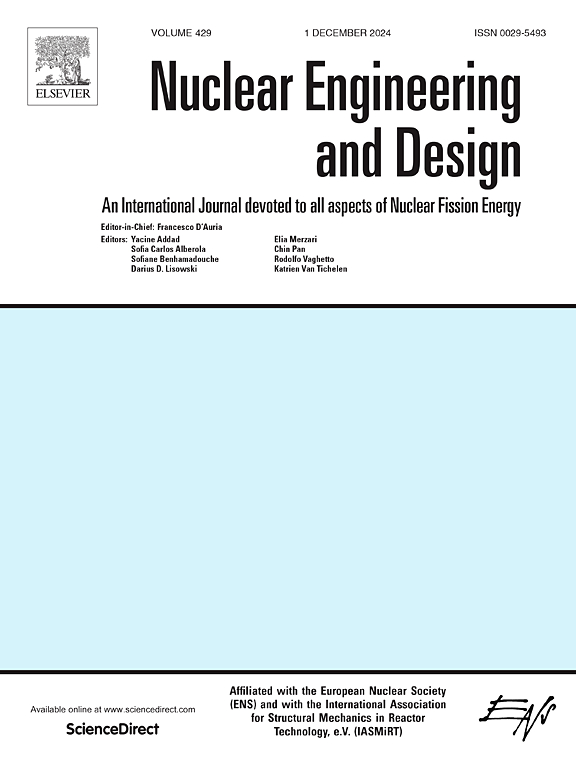The study of natural convection with decay heat source in an open horizontal neutron production target
IF 1.9
3区 工程技术
Q1 NUCLEAR SCIENCE & TECHNOLOGY
引用次数: 0
Abstract
The research examines the phenomenon of natural convection heat transfer induced by decay heat sources within the intricate flow channels of the target. A three-dimensional model of the target was developed utilizing principles of fluid dynamics and numerical methods for heat transfer. The research emphasizes the micro-convective and non-flow heat transfer phenomena occurring within the confined spaces of the target’s intricate flow channels. Simulations of boundary conditions pertinent to a power failure incident were conducted and subsequently validated against experimental data. The findings indicated that the temperatures at the pressure inlet and pressure outlet boundary conditions closely aligned with the experimental measurements, recorded at 52.7 ℃ and 51.5 ℃, respectively, with an error margin of less than 3%. Additionally, the investigation revealed that the external surrounding heat transfer coefficient has a negligible effect on the internal temperature distribution. This research offers significant insights and recommendations for assessing accident scenarios at the target station for the China Spallation Neutron Source (CSNS) Ⅱ upgrade project.
求助全文
约1分钟内获得全文
求助全文
来源期刊

Nuclear Engineering and Design
工程技术-核科学技术
CiteScore
3.40
自引率
11.80%
发文量
377
审稿时长
5 months
期刊介绍:
Nuclear Engineering and Design covers the wide range of disciplines involved in the engineering, design, safety and construction of nuclear fission reactors. The Editors welcome papers both on applied and innovative aspects and developments in nuclear science and technology.
Fundamentals of Reactor Design include:
• Thermal-Hydraulics and Core Physics
• Safety Analysis, Risk Assessment (PSA)
• Structural and Mechanical Engineering
• Materials Science
• Fuel Behavior and Design
• Structural Plant Design
• Engineering of Reactor Components
• Experiments
Aspects beyond fundamentals of Reactor Design covered:
• Accident Mitigation Measures
• Reactor Control Systems
• Licensing Issues
• Safeguard Engineering
• Economy of Plants
• Reprocessing / Waste Disposal
• Applications of Nuclear Energy
• Maintenance
• Decommissioning
Papers on new reactor ideas and developments (Generation IV reactors) such as inherently safe modular HTRs, High Performance LWRs/HWRs and LMFBs/GFR will be considered; Actinide Burners, Accelerator Driven Systems, Energy Amplifiers and other special designs of power and research reactors and their applications are also encouraged.
 求助内容:
求助内容: 应助结果提醒方式:
应助结果提醒方式:


